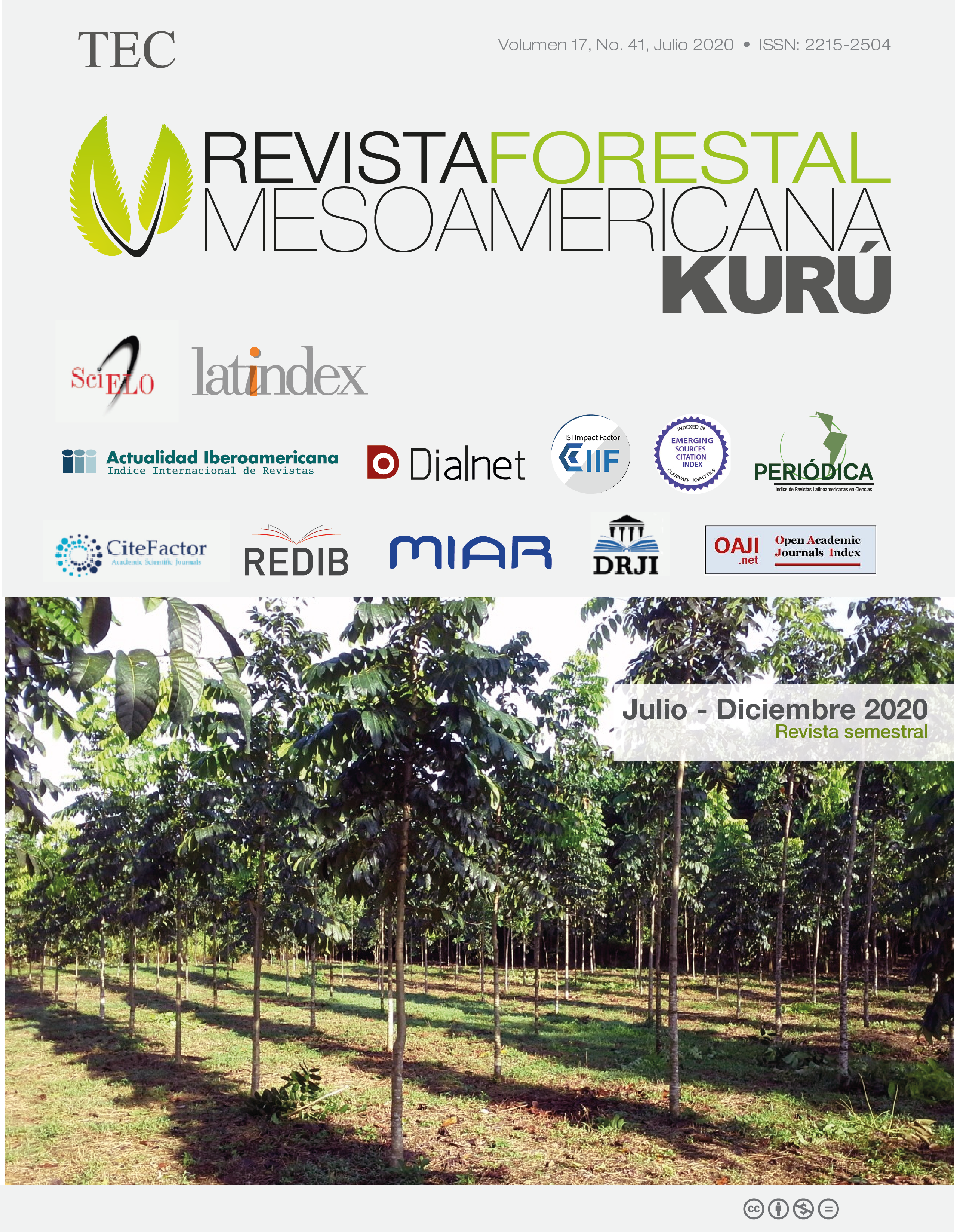Cultivation costs of superior mahogany clones (Swietenia macrophylla King) up to 4 years old in Costa Rica
Main Article Content
Abstract
The cultivation of high-value timber species can represent a competitive alternative of land use, especially in agroforestry systems (AFS) where timber production costs are diluted throughout the entire production system. One of those species with high potential is mahogany; however, the information available on its cost structure is almost nil. The objective of the present investigation was to determine the strictly necessary cost items for the management of smallholder plantations (less than 5 ha), both for pure plantations and AFS. The cost of mahogany cultivation in pure plantations was very similar to other high-value species such as teak, and varied mainly due to site climate and weed control method used. The cost of growing mahogany in sites with a marked dry season was 6.8 % higher than those that do not, due to the need to build and maintain firewalls and use water retainers gels. The cost of controlling the Hypsipyla grandella shoot borer represented 13.6 % of the total cost of the production system; in addition, growing forest species in combination with agricultural crops was 125 % less expensive than in pure plantations. The cost per tree in AFS up to four years decreased as the initial planting density increased, values between ¢ 2,095 and ¢ 1,139 were recorded for spacings between 4 m x 4 m and 12 m x 12 m, respectively.
Article Details

This work is licensed under a Creative Commons Attribution-NonCommercial-NoDerivatives 4.0 International License.
Al enviar un artículo a la Revista Forestal Mesoamericana kurú (RFMK), los autores ceden los derechos patrimoniales a la editorial de la RFMK una vez su manuscrito haya sido aprobado para publicación, autorizando a la RFMK a editarlo, reproducirlo, distribuirlo, y publicarlo en formato físico y/o electrónico, incluido Internet. La titularidad de los derechos morales sobre los trabajos objeto de esta cesión seguirá perteneciendo a los autores.
Este obra está bajo una Licencia Creative Commons Atribución-NoComercial-SinDerivadas 4.0 Unported.


